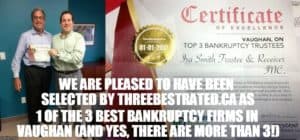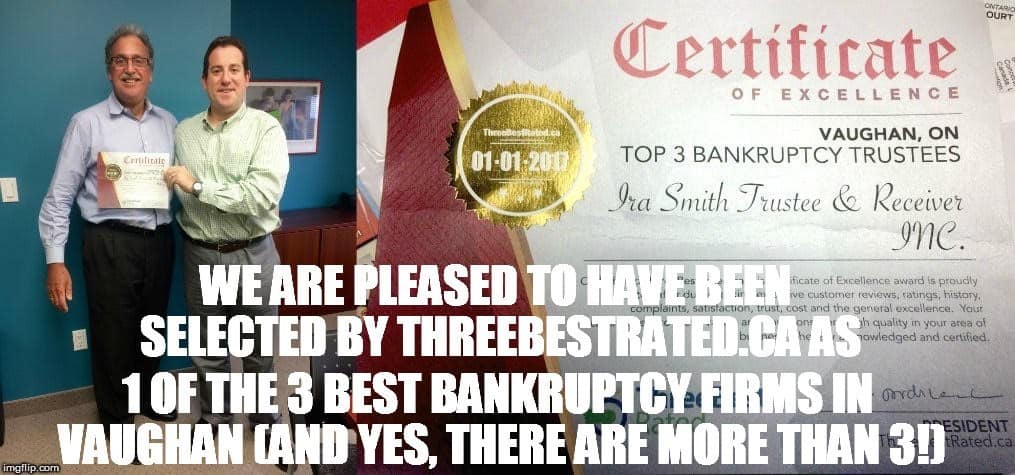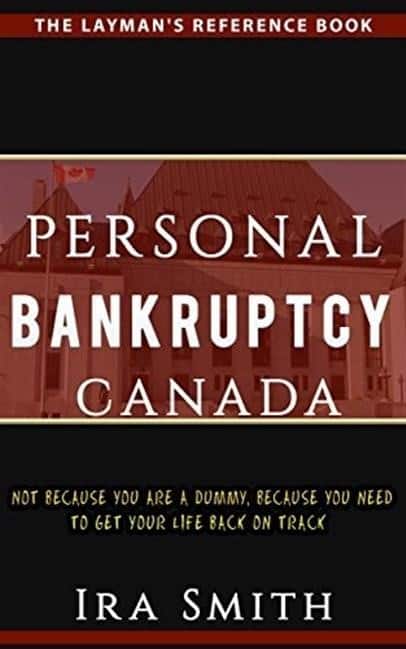Canadian debt solutions: Introduction
This blog discusses a very interesting recent decision in the British Columbia bankruptcy case of Hervias (Re), 2018 BCSC 1579 (CanLII). A licensed insolvency trustee (LIT or Trustee) (formerly known as a bankruptcy trustee) is trained to develop Canadian debt solutions. Sometimes the best debt solution does not involve a formal insolvency process; either a consumer proposal or personal bankruptcy. The purpose of this blog is to describe the case of Mr. Hervias and why sometimes the best advice is that you don’t need to go bankrupt. This is a story of Canadian debt help – the good, bad & ugly.
Canadian debt solutions: The position of the stakeholders
Mr. Hervias made a Court application to annul his bankruptcy. He says that the bankruptcy assignment ought not to have been submitted because his only creditor of any significance was the Canada Revenue Agency (CRA). The evidence showed that CRA would have accepted a voluntary proposal to settle his tax liability in regular monthly payments affordable to him. He claims that the Trustee never asked such questions of CRA prior to recommending that he file for bankruptcy.
CRA does not challenge an annulment. It is encouraging his proposal to repay the debt. They likewise intend to file a memorial on the title to his home in which he has equity higher than the debt owed to CRA!
The Trustee is the only party to oppose the annulment application. The LIT insists that when Mr. Hervias sought his help, Mr. Hervias was insolvent because CRA was garnishing his pension and had frozen his bank account. Mr. Hervias had a previous bankruptcy and a couple of other minor creditors. Mr. Hervias had significant equity in buildings he owned with his son and his wife.
Canadian debt solutions: How could this even happen?
Mr. Hervias owed CRA, his major creditor, unpaid income tax of $23,820.50, including penalty and interest. In April 2017, CRA froze his only bank account. He sought help from a debt consultant, Canada Debt Helpline. He required CRA debt forgiveness. On the second meeting with an agent of Canada Debt Helpline, they introduced him to a LIT.
The Trustee met Mr. Hervias at the offices of Canada Debt Helpline. The LIT argues that Mr. Hervias sought bankruptcy guidance when he initially met with him. The Court determined that Mr. Hervias was presented to the Trustee by the debt counselor. The evidence showed that Mr. Hervias looked for the help of a debt consultant; not for a bankruptcy trustee!
The Court found that at the date of bankruptcy, Mr. Hervias had net equity in real estate of $95,000 – far more than the total of his debts! I question whether Mr. Hervias was even insolvent at the date of bankruptcy.
His bankruptcy happened because a debt consultant, who had a cozy relationship with a LIT, recommended a bankruptcy trustee with whom no doubt a financial relationship existed.
Canadian debt solutions: Debt consultants cause harm
I have written before on the evils of the debt consulting/debt settlement industry:
- DEBT SETTLEMENT COMPANIES FINALLY TAKEN TO TASK IN ONTARIO – December 17, 2013
- HOW ADVANTAGES OF CONSUMER PROPOSALS SAVES YOU FROM DEBT SETTLEMENT COMPANIES – June 30, 2015
- CONSUMER PROPOSAL VS DEBT SETTLEMENT – October 1, 2015
- DEBT SETTLEMENT OR CONSUMER PROPOSAL CANADA: NEW CANADIAN GOVERNMENT REPORT EXPOSES DEBT SETTLEMENT COMPANIES HARMING CONSUMERS – May 3, 2017
- DIFFERENCE BETWEEN DEBT SETTLEMENT AND CONSUMER PROPOSAL: DEBT SETTLEMENT COMPANIES ARE PROS WHEN IT COMES TO CONS ON INSOLVENT CONSUMERS – May 10, 2017
Canadian debt solutions: Technically or temporarily insolvent?
At the time of the bankruptcy, Mr. Hervias declared some other little financial obligations including:
- a possible debt of roughly $900 to a Recreational Vehicle park chain;
- $213 owed to Telus Mobility from an old phone agreement; and
- a $186 debt to Best Buy for a laptop computer that he had not repaid in full.
Mr. Hervias had assets that well surpassed his obligations. Notwithstanding, he met the technical interpretation of a bankrupt person under s. 2 of the Bankruptcy and Insolvency Act (R.S.C., 1985, c. B-3) (BIA). Since the CRA had frozen his only bank account, he had no access to his income to fulfill his commitments as they came to be due.
Because he had a poor credit score, he was not able to arrange to finance on the real property he owned jointly. His wife was also not ready to consent to the financing because she was back in her homeland of the Philippines looking after her elderly mother. She asked her husband to wait until she returned to Canada.
Canadian debt solutions: Was there a realistic option for an insolvency process?
Definitely. The evidence showed that CRA would have agreed to an informal proposal, allowing Mr. Hervias time to repay his debt to CRA. As stated above, his other debts were minor. His bankruptcy was unnecessary.
This is a prime example of the dangers of debt consultants and the Trustees who are in bed with them. For the record, my Firm does not have a relationship with any debt consulting or debt settlement firm.
Canadian debt solutions: The Court’s concerns
The main concerns for the Court were:
- did the Court have jurisdiction to annul a bankruptcy in circumstances where the bankrupt was insolvent when the bankruptcy occurred and there is no finding that the bankrupt abused the Court’s process or committed fraud on his creditors in filing an assignment in bankruptcy;
- if the court has jurisdiction, whether it should exercise its discretion to annul the bankruptcy in this case; and
- in granting the application to annul, whether it should be subject to payment of the trustee’s fees.
The Court determined that it was absurd that someone with considerable assets which created income would assign himself into bankruptcy. This is especially so when the main creditor is prepared to accept payment over a longer time span in amounts that the debtor can afford. The Court concluded that these circumstances were both special as well as uncommon.
Canadian debt solutions: The Court’s decision
However, just because bankruptcy ought not to have taken place, an annulment does not instantly follow. The law is clear that the bankrupt must additionally satisfy the Court that in all the conditions of the case, thinking about all the different stakeholder interests, the discretion needs to be worked out in favour of annulment. Furthermore, the jurisprudence guides the Court to think about the legal rights of the insolvent, the creditors and the public policy issues.
The Court was critical of the LIT. The Court found that prior to the assignment in bankruptcy, the Trustee should have consulted with CRA. Certainly, had he done so, he would have found out that an informal proposal was possible and there would have been no need for any insolvency process, especially a bankruptcy.
In the Court’s view, Mr. Hervias and his creditors are not harmed by an annulment, while the public interest in the integrity of the bankruptcy process is not undermined by annulling this bankruptcy under these unique conditions. Mr. Hervias’ bankruptcy was annulled according to s. 181 of the BIA. Mr. Hervias was ordered to pay the Trustee’s fee and disbursements immediately, subject to taxation.
Canadian debt solutions: Our approach
If you or your company are experiencing financial difficulties, you need a professional trustee. If yes, call the Ira Smith Team. Our approach for each file is to create an end result where Starting Over, Starting Now takes place. This starts the minute you are at our front door.
First of all, we always offer a free consultation. We listen to your issues and offer you a full range of realistic options to help you get out of debt. There have been many times where thinking about all the solutions available, we have advised debtors that they do not need an insolvency process. Rather, maybe they can avoid it by implementing an informal process. As a result, we do not earn any fees from such advice; it is just the right thing to advise and do in those circumstances to help you make total debt freedom.
The earlier you contact us, the more options we will have to carry out. Whether it is a corporate restructuring or personal debt settlement through a consumer proposal, the goal is to avoid bankruptcy. However, if bankruptcy turns out to be the best option, we can assist there too.
You’re simply one phone call away from taking the necessary steps to get back to leading a healthy, balanced hassle-free life, ending the pain and stress you are feeling forever. Call Ira Smith Trustee & Receiver Inc. today for your free consultation.










